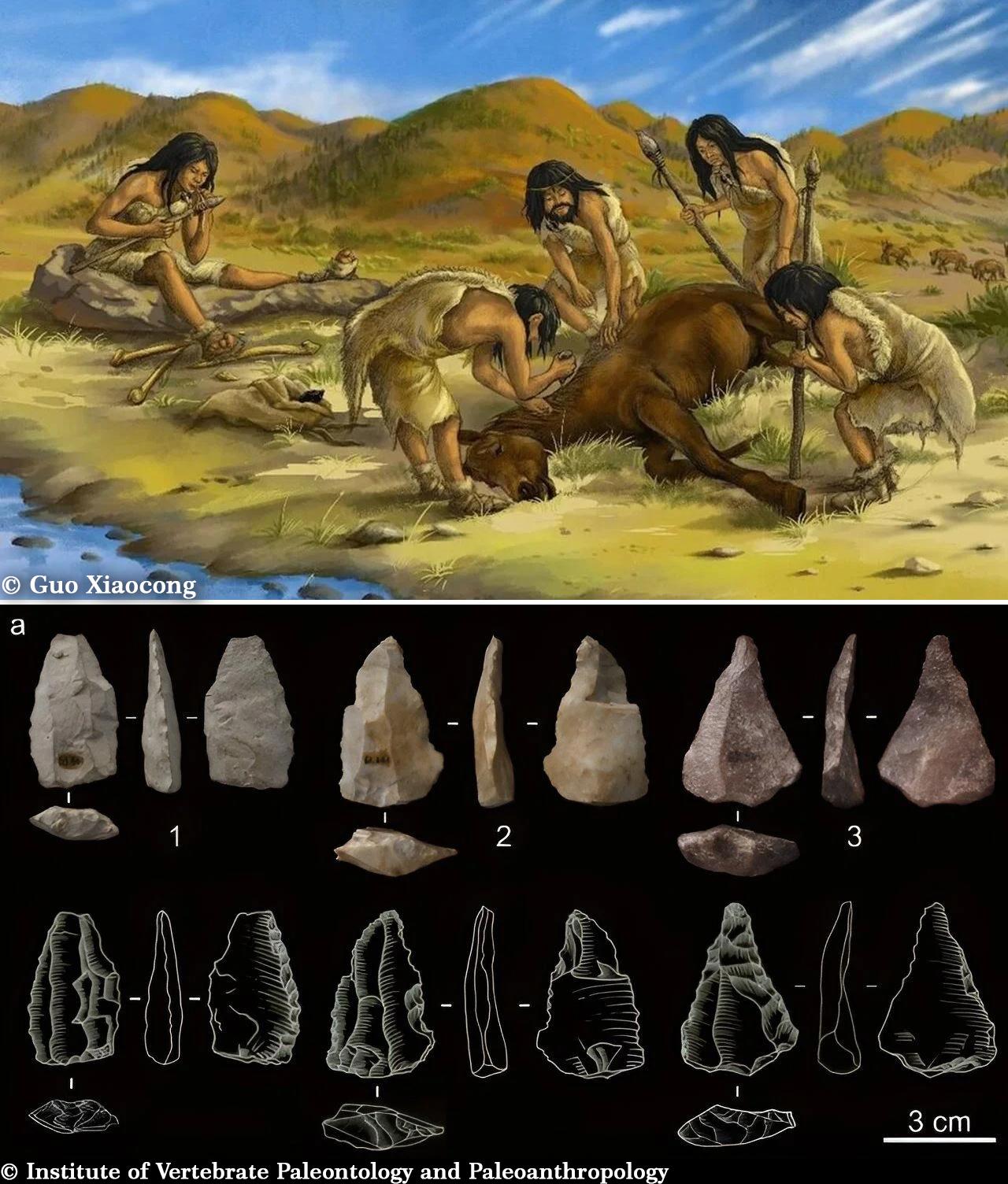The giant crocodile ultimately had to yield to the toughness of the turtle’s shell
Turtles have a lifespan of hundreds of years, making them one of the longest living animals on the planet. Just having a complete body state, the turtle is a master of survival, possessing a strong defense that makes any opponent shy. All these feats are thanks to the unparalleled hard shell of the tortoise.
Hard shell makes turtle invincible?
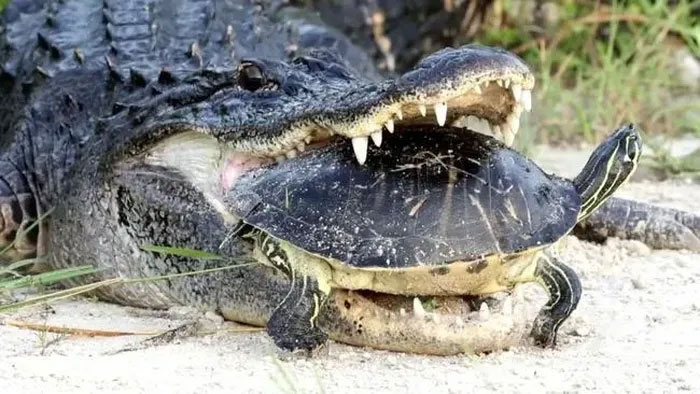
Crocodiles are one of the few creatures that can directly destroy a turtle’s shell
Tortoise shells are the nightmare of countless predators – a party that can’t be escaped and can’t fly is right in front of you but can’t be enjoyed. Can’t chew, can’t swallow, no matter how hard the teeth are, it is difficult to penetrate this turtle shell.
You’ve probably heard the story of an eagle eating a tortoise: The eagle grabbed the turtle and flew up, then dropped it to break the turtle’s shell, then ate the meat inside. But in fact, most eagles only eat small turtles, they directly poke holes in the shells with their sharp beaks, then bite and eat the turtle meat.
Before an adult tortoise, the eagle does not usually attack directly. The fully developed tortoise shell is very hard and smooth, with a large surface area making it difficult for an eagle to grasp with its talons. The process of “butchering” a turtle is long and laborious, so the eagle would rather catch some hamsters and rabbits to eat.
In the wild, crocodiles are one of the few creatures that can directly destroy a “complete” turtle shell with a powerful bite. But at the same time, there are many real-life cases where crocodiles are powerless against hard shells.
Here we have to mention one thing in common: The bite force between different crocodile species is also different, and the body structure of turtles is also diverse.
In general, most turtles have a slightly curved domed shell – a structure that makes it difficult for predators to bite and crush. However, in order to facilitate aquatic activities, many species of water turtles will develop relatively flat and light shells, so their defenses are not as strong as tortoises.
Therefore, as ferocious as crocodiles, they rarely “seek things” with turtles with hard shells, but prefer river turtles as objects.
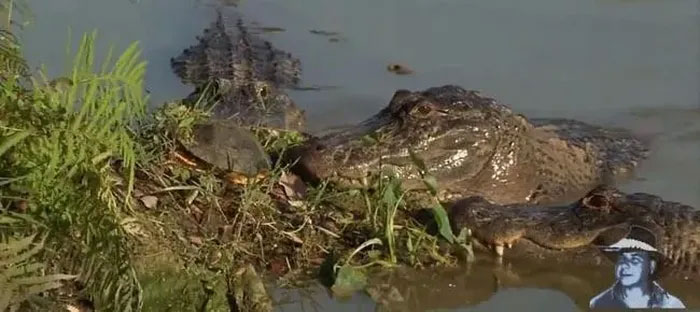
Crocodiles often choose objects as river turtles more.
In addition, those who follow the animal world will have the comment: The jaguar is the only scary creature besides the crocodile that can bite through the turtle’s shell.
But in reality, jaguars only hunt sea turtles. When turtles come ashore to lay eggs at night, jaguars will take advantage of the opening to bite the turtle’s throat to death.
The reason jaguars can enjoy sea turtles as such normal meals is because sea turtles cannot fully retract their heads and limbs into their shells. Because they live in the sea all year round, sea turtles have a fish-like shape, which reduces friction and drag in the water, helping them swim faster and easier.
But at the same time, they also lose the ability to “shrink”. In the sea, the scales on their heads and limbs can basically protect themselves, but on land they are useless.
Therefore, it is impossible for the jaguar to “bite through the turtle’s shell” to kill the sea turtle. The jaguar can only attack when the sea turtle is in its most vulnerable breeding period and exposes its most vulnerable.
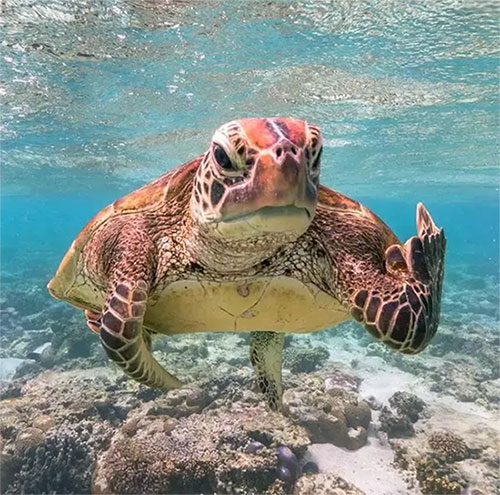
Sea turtles cannot fully retract their heads and limbs into their shells.
In short, in the natural world, no animal can directly attack the turtle shell.
Experts’ nightmare
In Asia, there is a type of turtle that can be called the ultimate master of the “defensive withdrawal” strategy. They belong to the genus Cuora, also known as Asian box turtles.
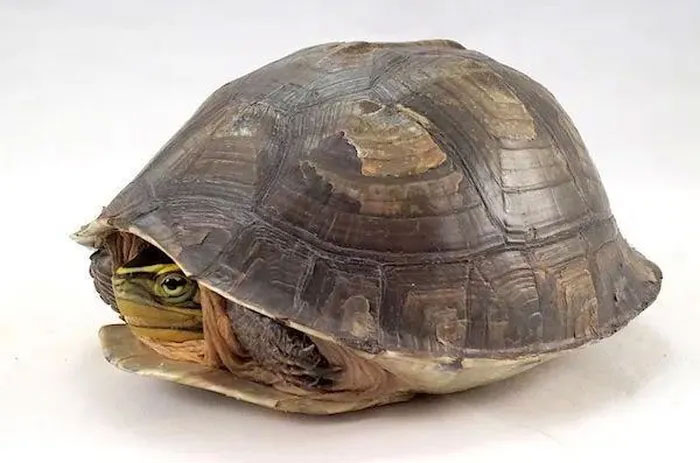
Tortoise defense mechanism.
From the photo above, you can also see, when this turtle enters defense mode, the limbs and head will completely retract into the shell forming an almost invincible “ball”.
This pattern of “total blockade” is very similar to the nine-belt tatu’s ability to curl up into a ball. The hard scales of the nine-belt tatu are even so powerful that there are a few cases of bouncing bullets “killing” people.
But from a biological point of view, tortoise shell and tatu armor are two different models.
The tatu’s armor is a patch of calcified bone formed by skin ossification, similar to the scale armor on the back of an alligator. Tortoise shell is composed of a dorsal armor and an abdominal layer. The carapace is again divided into 2 layers: the inner and outer layers, the inner layer is actually its skeleton – including the skeleton and ribs. The outer layer is composed of the stratum corneum or tough skin derived from the epidermis.
The two layers of the structure are staggered, increasing the solidity of the entire turtle shell. If tatu and alligator armor seems to be covered by a layer of chain armor, the turtle shell is an enhanced version of “chain and plate armor” with a multi-layered structure inside and out.
However, scientists focus more attention on studying the mechanical properties of the structure and biological applications of turtle shells.
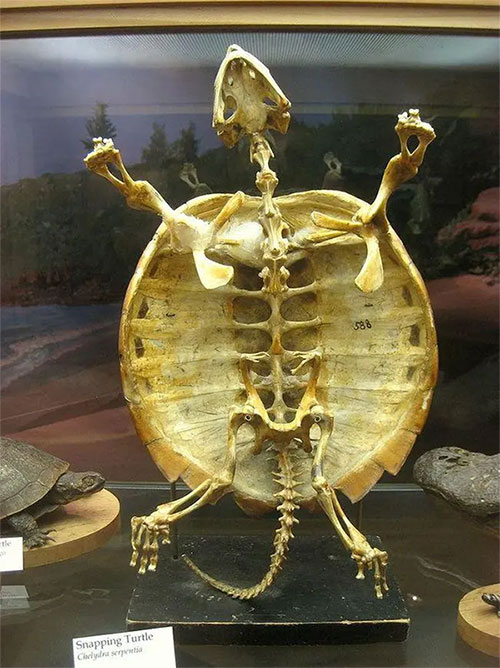
- The moment a giant snake is devouring its own kind makes everyone panic
- Bizarre creature found on Thai beach with big head and fish-like body
- Unearth the secret of the hidden treasure guarded by venomous snakes
- The people of Spain were amazed by the giant albino catfish with a record weight of 194 pounds
- “Draco” Also Known As Flying Dragons Exist And They Are A Real Wonder of Venture
- These rare albino turtles appear to be fiery little creatures.



